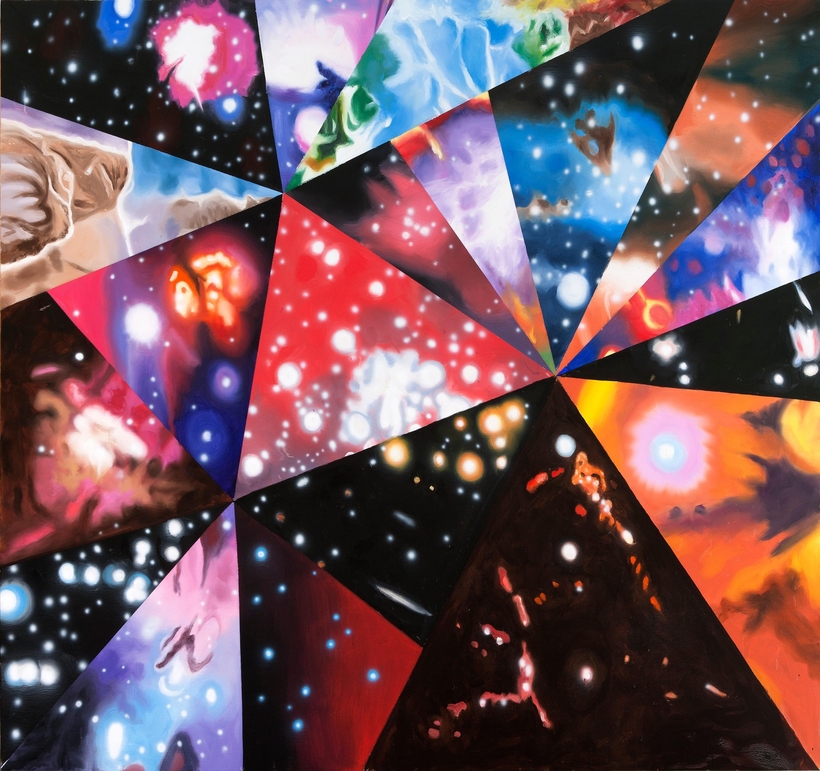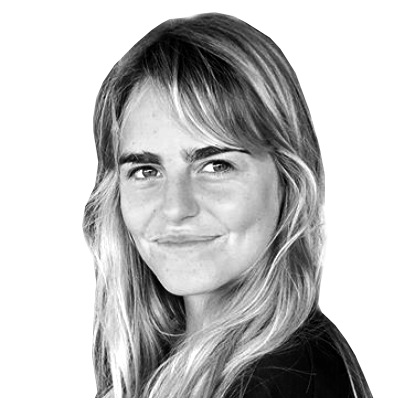When Alain Jacquet, then 25, and James Rosenquist, 21, met in Paris in 1964, the Pop-art scene was taking off in America. Rosenquist, who hailed from Grand Forks, North Dakota, and was at the heart of the movement in New York, had come to the French capital for an exhibition at Ileana Sonnabend’s gallery. Jacquet lived a few blocks away. Neither artist was famous yet. Jacquet was just starting with silkscreens; Rosenquist was putting up commercial billboards.
A few months later, Jacquet relocated to Manhattan. Though he and Rosenquist were friendly, the two men moved in different circles—Jacquet with figures such as Jasper Johns and Roy Lichtenstein, while Rosenquist shared rowdy nights with Andy Warhol and Claes Oldenburg. The friendship deepened in the 1980s, when Rosenquist moved into an airy studio on Chambers Street and Jacquet set up shop a few blocks north, on West Broadway.

It was an exciting time to be in Tribeca. The Odeon opened in 1980 and was soon the neighborhood martini spot for artists, a group that included Marisol, Keith Sonnier, Donald Sultan, and Terry Winters. And then there were the dinner parties at Rosenquist’s studio. “I feel like I grew up at a party,” remembers Lily Rosenquist, his daughter. “We were always running around at our fathers’ gatherings,” adds Gaia Jacquet-Matisse, Jacquet’s daughter.

The Odeon’s neon sign still stands, but the glamour of that downtown world is long gone. Jacquet died in 2008, and Rosenquist in 2017. So two years ago, Gaia, an independent curator, called her mother, Sophie Matisse, who is friends with Rosenquist’s former wife, Mimi Thompson, and daughter Lily.
“I asked them,” Gaia says, “did they want to organize a show? It was an easy yes. Then we began poring through archives together.” The four women presented the project to Perrotin and Kasmin galleries—it would be Jacquet and Rosenquist’s first exclusive show together.

Their art, so vibrant it seems to splash off the canvas, suits Perrotin’s Orchard Street industrial space on the Lower East Side. Upstairs, works from the 1960s reveal the artists’ early explorations—Jacquet’s silkscreens and computerized imagery alongside the photorealist precision of Rosenquist’s paintwork.
On view downstairs are pieces from the 1990s, when both men became infatuated with outer space. Taking inspiration from Ben-Day dots, Jacquet saw planets and Earth as dots, and black holes as donuts, which were dots within dots—a resemblance later confirmed by NASA images. Rosenquist, meanwhile, focused on meteorites and floating forms on cut-up canvas planes. The affinity between their visions is eerie. “These space-inspired works on the ground floor initially look like one artist’s series,” Sophie notes. “But as you get closer, you see the techniques are completely different.”

The exhibition is a wonderful tribute to both artists, but especially welcome is its focus on Jacquet, a European who is still less known than his American counterparts. “What better way to reintroduce Alain to the American Pop-art scene than to show him alongside a contemporary and friend?,” Gaia reflects. “Their work, even in the 90s, shares surprising similarities.”
“It’s so exciting it’s finally up,” says Sophie. “It’s poignant, because both Alain and James are gone. But I think they’d love it.”
“Alain Jacquet & James Rosenquist” is on at Perrotin New York until December 21
Elena Clavarino is a Senior Editor at Air Mail


